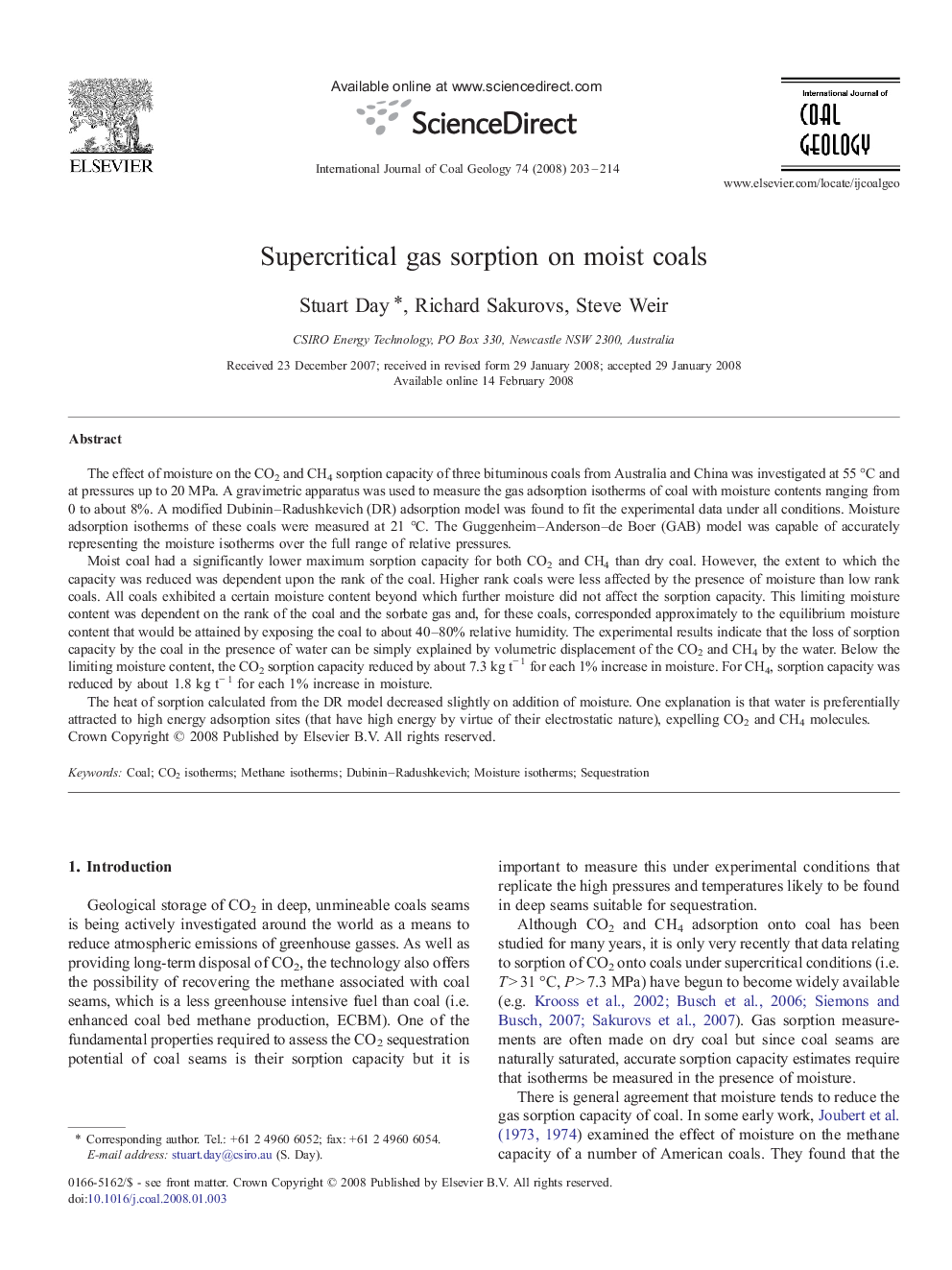| Article ID | Journal | Published Year | Pages | File Type |
|---|---|---|---|---|
| 1754178 | International Journal of Coal Geology | 2008 | 12 Pages |
The effect of moisture on the CO2 and CH4 sorption capacity of three bituminous coals from Australia and China was investigated at 55 °C and at pressures up to 20 MPa. A gravimetric apparatus was used to measure the gas adsorption isotherms of coal with moisture contents ranging from 0 to about 8%. A modified Dubinin–Radushkevich (DR) adsorption model was found to fit the experimental data under all conditions. Moisture adsorption isotherms of these coals were measured at 21 °C. The Guggenheim–Anderson–de Boer (GAB) model was capable of accurately representing the moisture isotherms over the full range of relative pressures.Moist coal had a significantly lower maximum sorption capacity for both CO2 and CH4 than dry coal. However, the extent to which the capacity was reduced was dependent upon the rank of the coal. Higher rank coals were less affected by the presence of moisture than low rank coals. All coals exhibited a certain moisture content beyond which further moisture did not affect the sorption capacity. This limiting moisture content was dependent on the rank of the coal and the sorbate gas and, for these coals, corresponded approximately to the equilibrium moisture content that would be attained by exposing the coal to about 40–80% relative humidity. The experimental results indicate that the loss of sorption capacity by the coal in the presence of water can be simply explained by volumetric displacement of the CO2 and CH4 by the water. Below the limiting moisture content, the CO2 sorption capacity reduced by about 7.3 kg t− 1 for each 1% increase in moisture. For CH4, sorption capacity was reduced by about 1.8 kg t− 1 for each 1% increase in moisture.The heat of sorption calculated from the DR model decreased slightly on addition of moisture. One explanation is that water is preferentially attracted to high energy adsorption sites (that have high energy by virtue of their electrostatic nature), expelling CO2 and CH4 molecules.
